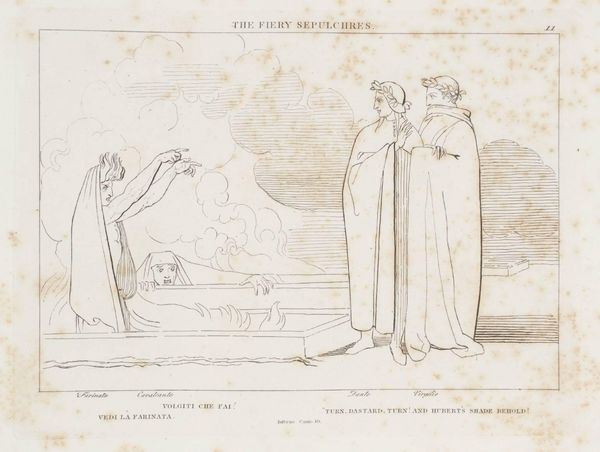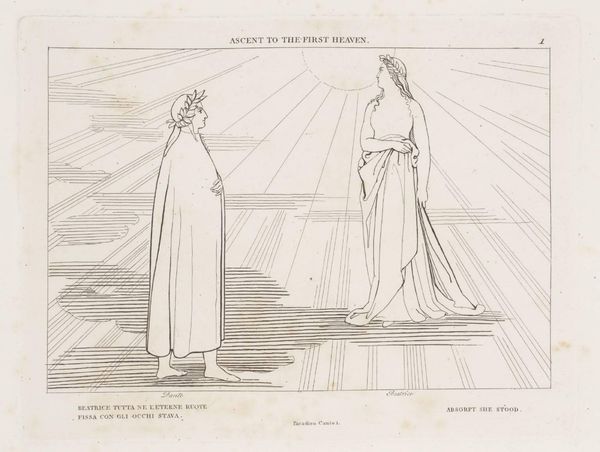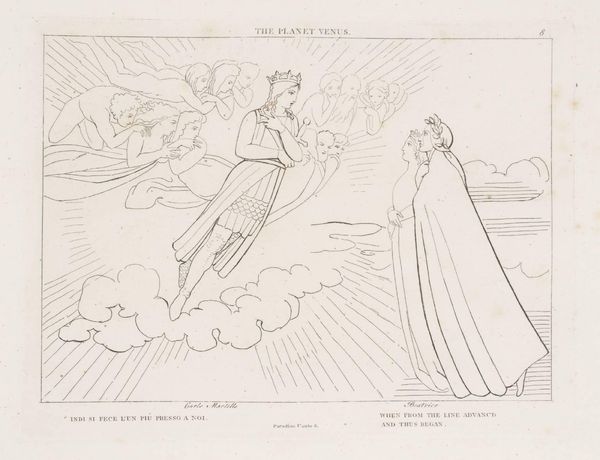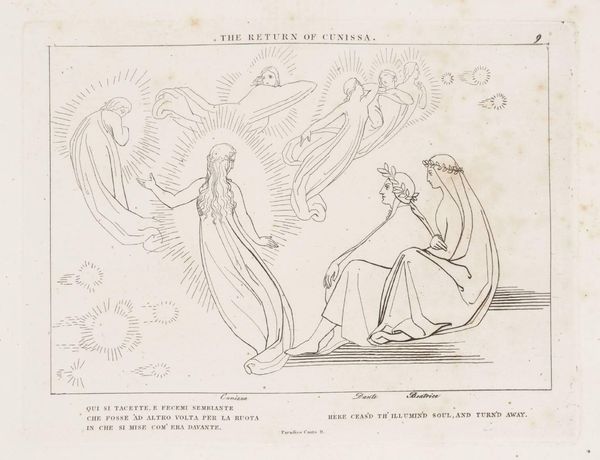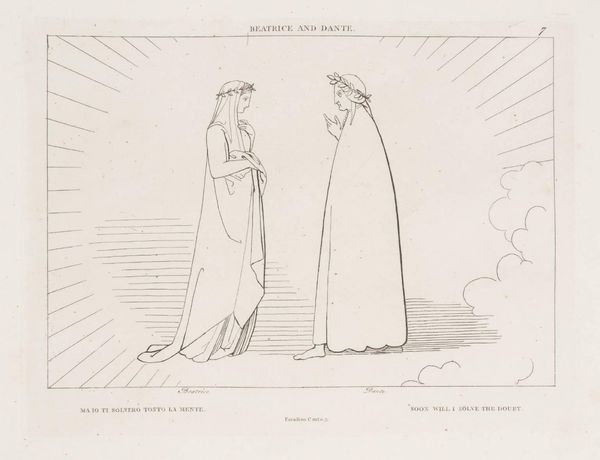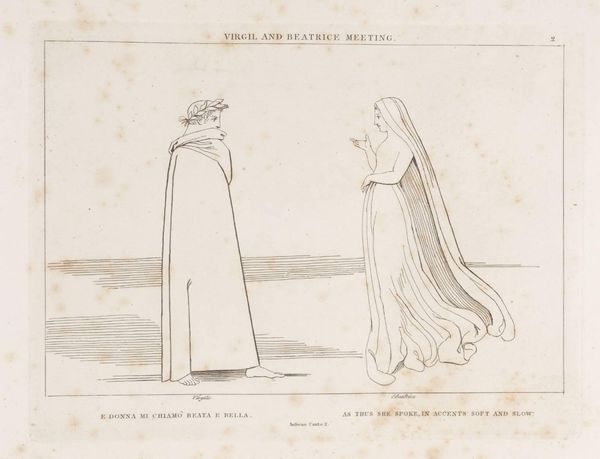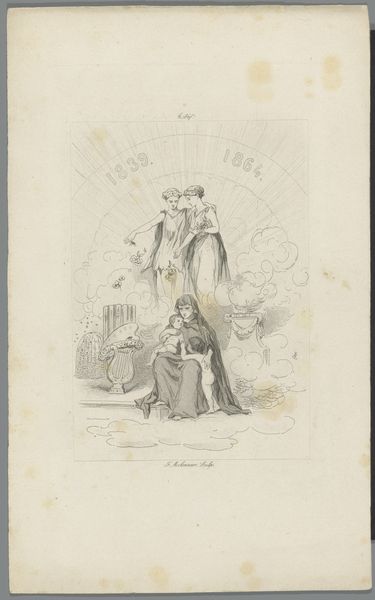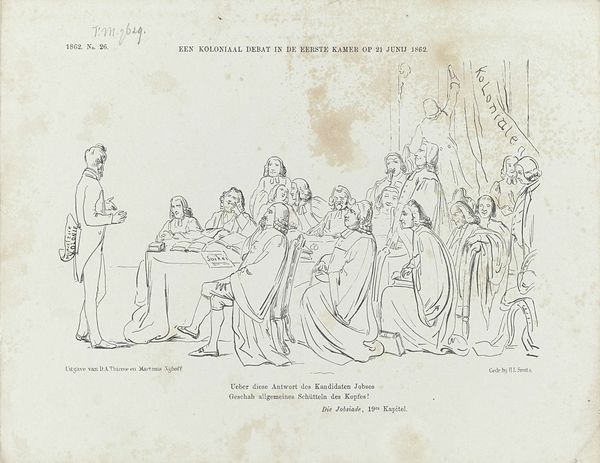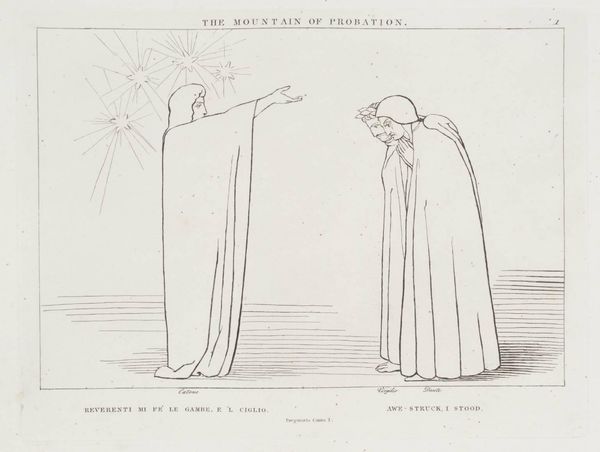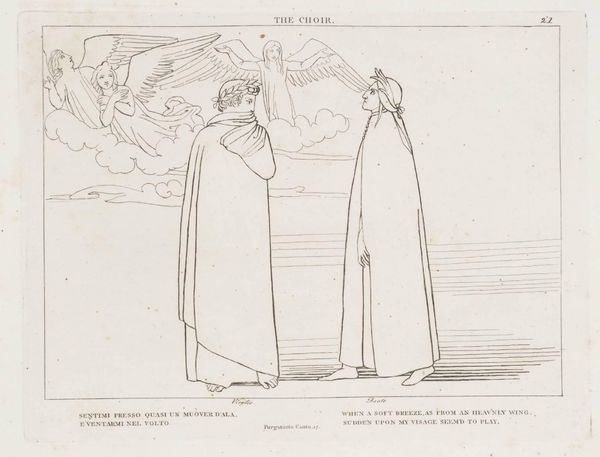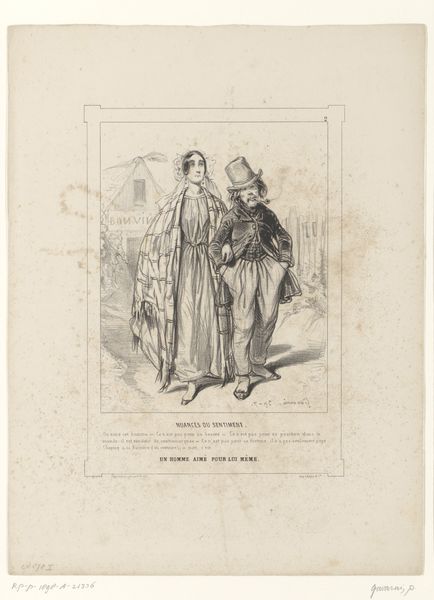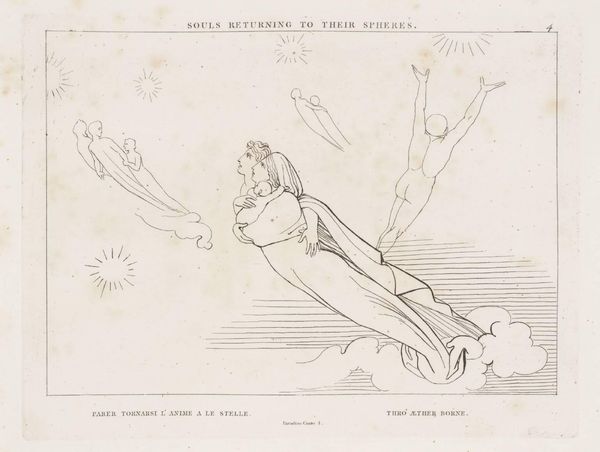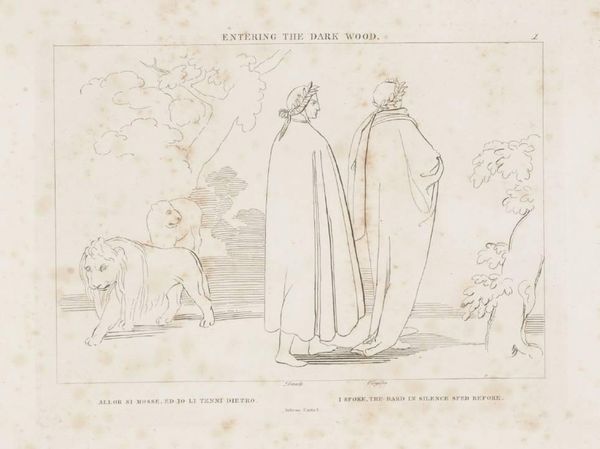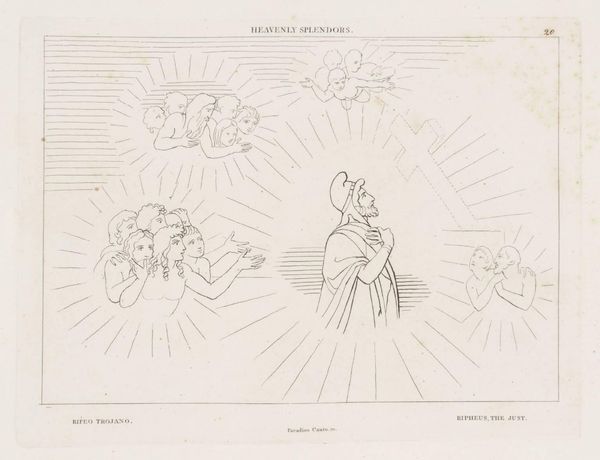
Dimensions: image: 132 x 190 mm
Copyright: CC-BY-NC-ND 4.0 DEED, Photo: Tate
Curator: John Flaxman, active in the late 18th and early 19th centuries, created this drawing titled "The Planet Mercury." It's currently held in the Tate Collections. Editor: It has a dreamlike quality, doesn't it? The figures are so ethereal, almost floating within this starry space. Curator: Flaxman was deeply influenced by classical antiquity and the Neoclassical movement. We can see how he applied those interests through his focus on line and form. The political atmosphere of the era favored art that promoted virtue, order, and rationality. Editor: The image's symbolic nature is palpable. Mercury, as a Roman deity, represents communication, eloquence, and intellect. These figures are bathed in radiant starbursts, suggesting divine inspiration. Curator: Absolutely. Flaxman was keen to revive a classical past that could serve Britain's cultural present. His works were part of a larger project to elevate British taste and moral standards. Editor: Looking at it now, I find myself contemplating the role of celestial imagery throughout art history. It is interesting to see the blend of classical and astronomical motifs to evoke a sense of wonder. Curator: Indeed. The image and its historical context allow us a deeper understanding of the period's artistic and intellectual preoccupations. Editor: I am left with a sense of how symbols evolve and adapt to different cultural periods, yet retain their core emotional resonance.
